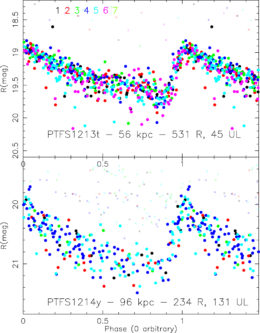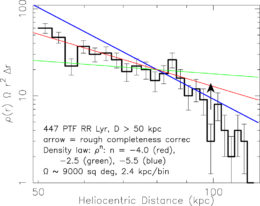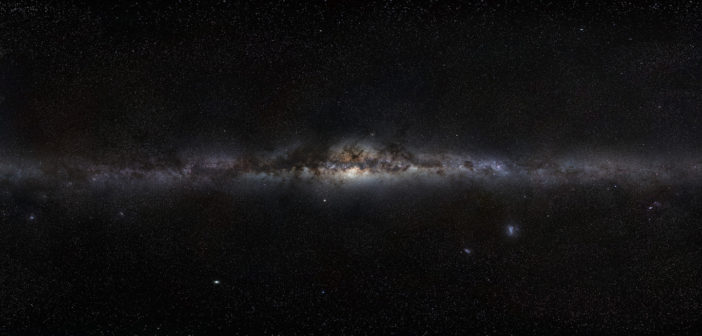Studying the large-scale structure of the Milky Way is difficult given that we’re stuck in its interior — which means we can’t step back for a broad overview of our home. Instead, a recent study uses distant variable stars to map out a picture of what’s happening in the outskirts of our galaxy.
Mapping with Tracers

Phase-folded light curve for two of the RR Lyrae stars in the authors’ sample, each with hundreds of observations over 7 years. [Cohen et al. 2017]
RR Lyrae stars are low-mass, variable stars that make especially good tracers. They pulsate predictably on timescales of less than a day, creating distinctive light curves that can easily be distinguished and tracked in wide-field optical imaging surveys over long periods of time. Their brightness makes them detectable out to large distances, and their blue color helps to separate them from contaminating stars in the foreground.
Best of all, RR Lyrae stars are very nearly standard candles: their distances can be determined precisely with only knowledge of their measured light curves.

Locations on the sky of the several hundred outer-halo RR Lyrae stars in the authors’ original sample. The red curve shows the location of the Sagittarius stream, an ordered structure the authors avoided so as to only have unassociated stars in their sample. [Cohen et al. 2017]
Distant Variables
In a new study led by Judith Cohen (California Institute of Technology), the signals of hundreds of distant RR Lyrae stars were identified in observations of transient objects made with the Palomar Transient Factory (PTF) survey. Cohen and collaborators then followed up with the Keck II telescope in Hawaii to obtain spectra for a narrower sample of 122 RR Lyrae stars.
The stars in the sample lie at whopping distances of ~150,000–350,000 light-years from us. For comparison, we’re about 25,000 light-years from the center of the galaxy, and the stellar disk of the galaxy is only thought to be perhaps 100,000 light-years across — so these variable stars lie firmly in the Milky Way’s outer halo. The spectra of the stars reveal their radial velocity, providing us with precise measurements of how objects in the outer halo move.
More Space in the Suburbs?

Histogram with distance for the ~450 RR Lyrae stars in the authors’ broader sample. When the authors include their estimates for the completeness of their sample, the best fit scales with distance as r-4, shown by the red line. [Cohen et al. 2017]
The work presented in this study goes a long way toward building our view of the galaxy’s outer halo. Future catalogs like the Pan-STARRS RR Lyrae catalog and upcoming surveys like LSST should also significantly increase the tracer sample size and measurement accuracy, further allowing us to map out the outskirts of the Milky Way.
Citation
Judith G. Cohen et al 2017 ApJ 849 150. doi:10.3847/1538-4357/aa9120

1 Comment
Pingback: tracing MW's outer structure